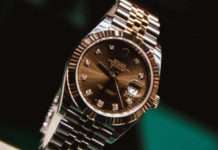- A new episode of “Mongabay Explains” examines the controversial fishing method known as bottom trawling, in which vessels drag a net across the seafloor to scoop up bottom-dwelling marine life.
- Ever since the 14th century, fishers who use other gear types — later joined by conservationists and scientists — have objected to bottom trawling, saying the gear takes too many fish and destroys seafloor habitat that’s essential to the functioning of marine ecosystems.
- Proponents of bottom trawling, however, argue that the practice provides an important share of our seafood as well as numerous jobs, and cannot be abandoned.
- In this video, Mongabay takes a look at bottom trawling and the reasons it’s so controversial.
When it comes to news about fishing, bottom trawling sparks some of the most dramatic stories.
In September, for instance, Greenpeace activists took it upon themselves to drop 18 boulders weighing up to 1.7 metric tons apiece in a U.K. conservation zone, according to media reports. The point was to prevent bottom trawlers from fishing inside the zone, and to chide the UK government for permitting the practice there in the first place because of the damage it inflicts on the marine environment.
In fact, people have been vociferously objecting to this fishing method since at least the 14th century, soon after it was introduced.
Bottom trawlers drag heavy nets across the seafloor to scoop up marine life living there. The nets don’t discriminate and a lot of the catch winds up being discarded as bycatch or turned into food not for people but for farmed fish, livestock or pets. Meanwhile, down below, the gear scraping over the bottom churns up sediment, releases carbon stored there, and overturns rocks, reefs, and other critical habitat for sea life.
Today, bottom trawling is a huge industry. It is an important source of protein for the growing human population, providing around one-quarter of the wild-caught seafood people consume every year, according to the Sea Around Us Project at the University of British Columbia, Canada. And millions of people around the world find employment in bottom trawling or industries that depend on it.
Can bottom trawling be made more sustainable or should it be scrapped altogether? Watch our short explainer video above to find out more.
Banner image: A Dutch super trawler fishing 30 miles off the coast of Mauritania. Image © Pierre Gleizes / Greenpeace.
FEEDBACK: Use this form to send a message to the editor of this post. If you want to post a public comment, you can do that at the bottom of the page.
This story first appeared on Mongabay
South Africa Today – Environment
This article is licensed under a Creative Commons Attribution-NoDerivatives 4.0 International License.
You may republish this article, so long as you credit the authors and Mongabay, and do not change the text. Please include a link back to the original article.












